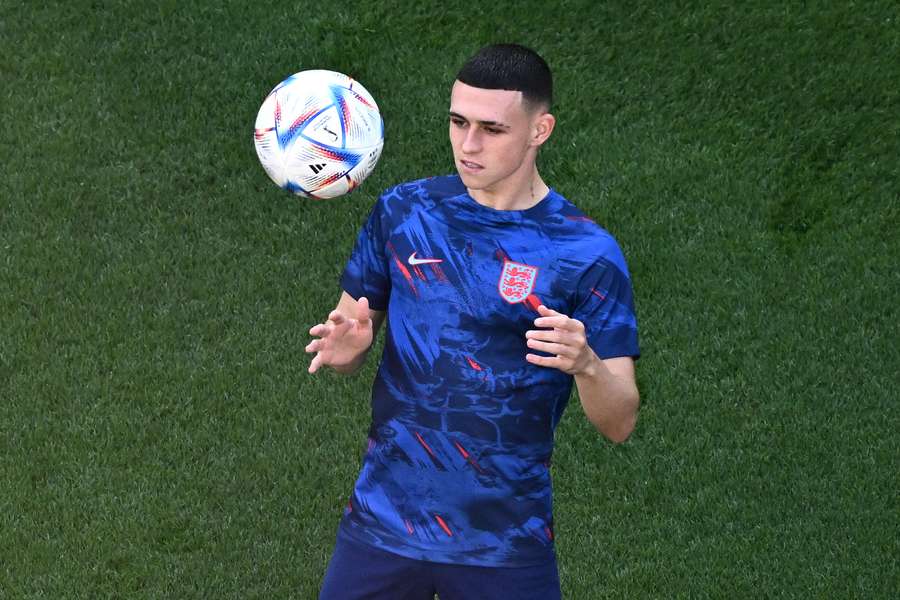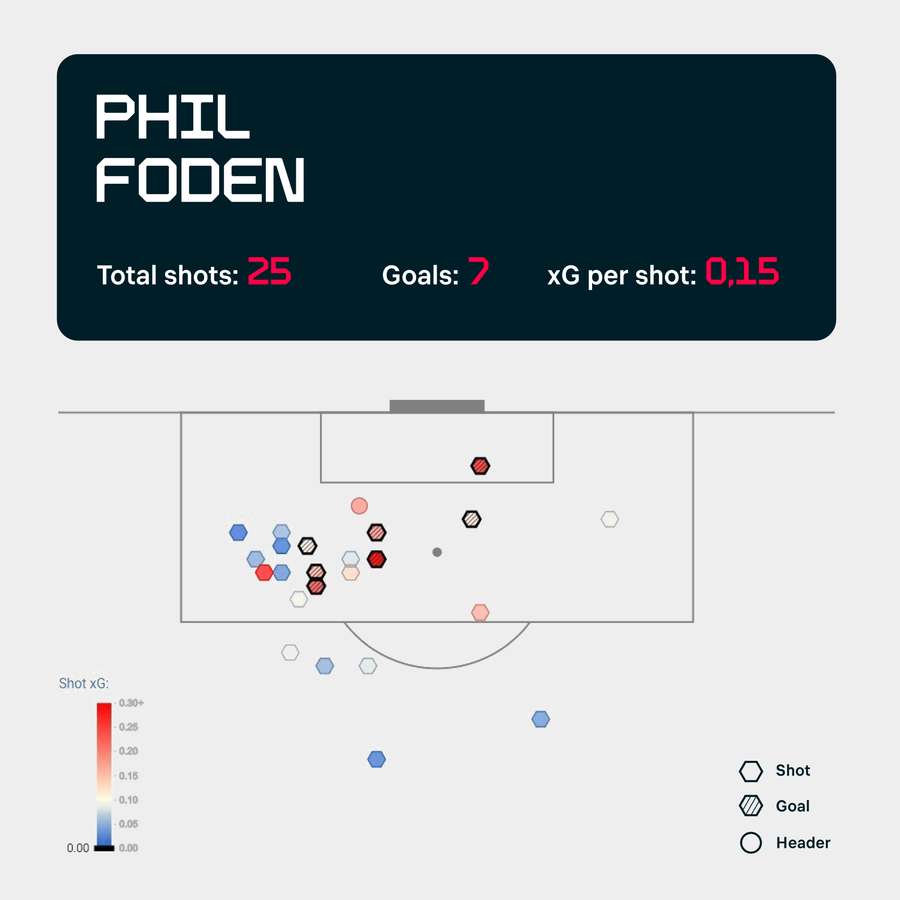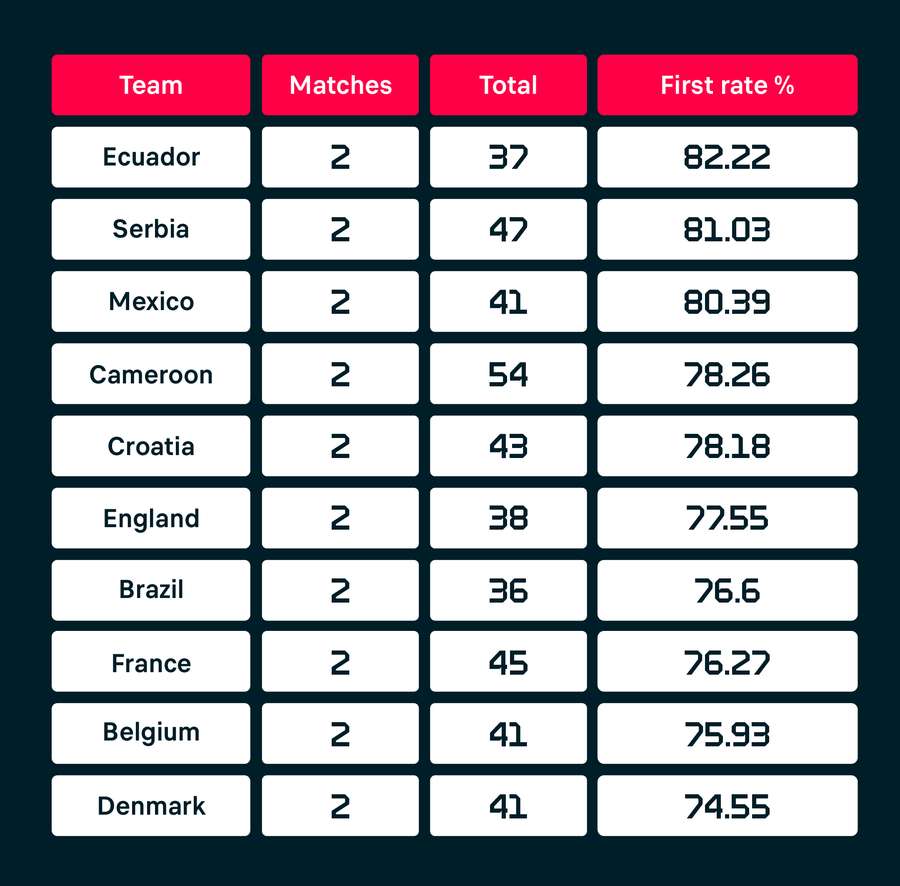Data analysis: Southgate isn't picking Foden but he's a great asset

In the duel against the USA, he didn't even appear on the field at all, even though England created the only significant chance during it.
Moreover, in the 93rd minute came their best chance. But Harry Kane missed Luke Shaw's cross and the match ended in a goalless draw. In the column of expected goals, i.e. looking at the quality of the chances created, the score ended at a fair 0.69 vs 0.69.
For the complete omission of Foden, coach Gareth Southgate was heavily criticised by journalists and experts in English football.
"He is our best player and he should start," said former England internationals Wayne Rooney and Gary Neville. From the point of view of the data, one can agree with such a resolute assessment.
The qualities of wingers are usually judged on the basis of goals scored and shooting opportunities created. Foden excels in both during the current Premier League season.
Among the wings with at least 800 minutes played, only Mohamed Salah gets into better finishing positions, and if we analyse their production (from standard situations), together with Salah, Michael Olise from Crystal Palace is in a slightly better position.
In a model of expected assists including set pieces, Foden moves ahead of Salah, trailing only Olise and Morgan Gibbs-White, who is the league's best playmaker from set pieces.

Foden combines the ability to regularly get into good shooting positions with excellent technique. During his Premier League career, he has had 172 shots on goal and has 24.52 goals expected. But his post-shot xG is even 28.32, which means that he places his shots on goal significantly better than the average player.
He managed to score 30 real goals and in a sample of 6,457 minutes, it is safe to say that he is an excellent finisher. It's showing this season too - no other Premier League winger is converting a higher percentage of his shots. And although he has to share the goals with Erling Haaland, only Miguel Almirón (8) has scored more goals than him (7) from the wing.
Although Foden often gets inside the penalty area, where he creates and finishes, he is also extremely dangerous in the wing areas. No other player has as high a centre success rate as him, and if we measure their overall dangerousness according to the advanced mathematical metric GPA+, only Demarai Gray and Jack Harrison are better. But they did not travel to Qatar.
Foden in the England jersey would use the ability to accurately centre into the dangerous area not only from the game, but above all from the much-vaunted standard situations, which are one of the main attacking weapons of the current selection.
After the first match, Southgate did not want to change the winning line-up, but after the second, he has little choice. Although the possibility that England misses out on progressing is minimal (Wales would have to win by a four-goal margin, assuming that one of Iran or USA scores three points in the group's other game), it might not work out in the playoffs without Foden.
The best defence is... defence. The Ecuadorian is so far the second-best in the tournament
Although the expected goals metric is no longer the most modern element of football analytics, if used correctly, it is still very useful when analysing player and team performances.
This also applies to evaluating the quality of the defence and predicting its future performance. If we have a sufficient sample of data wrapped in the necessary context, reliable conclusions can be drawn.
In the pre-match analysis, data experts from the Czech company 11Hacks pointed out that Ecuador's defence will be a tough test even for the long-term well-functioning offensive of the Netherlands. The data strongly supported this theory.
In the World Cup qualifying match, Ecuador allowed Argentina, who started with Lionel Messi, Julian Alvarez or Rodrigo de Paul, only five shots and a total of 0.76 xG.
This was not an isolated incident against a strong opponent. Mexico, Chile, Colombia and Peru also had similar problems with creating chances.
In a series of six friendly matches played at home over the past six months, Ecuador have not conceded a single goal. They averaged 0.71 expected goals per game during that period.

They didn't even let Qatar near their goal in the opening game of the championship.
We have a sample of 14 games in the last year alone, made up of 1,260 minutes of play.
Moisés Caicedo, Pervis Estupiñán, Piero Hincapié or Ángelo Preciado are performing very well defensively in the top European leagues according to the data.
All these key players have travelled to Qatar.
In the end, the Dutch had only two shots on goal against Ecuador, not once from inside the box, and the final xG was 0.05 to 1.29 against them.
Out of the last 30 matches, the Netherlands have scored less than 1 expected goal per match only four times. They can owe the 1:1 draw to the excellent technique of Cody Gakpo, who was able to hit from a distance.
The numbers now speak clearly - among the teams that have played the full portion of the two matches so far, Ecuador has the second-best defence behind Argentina.
At the same time, it is not the case that the Ecuadorians came to the championship to present themselves with a fearful defensive game. Their defensive line is the fourth-highest in the tournament so far, behind Portugal, England and Germany. And of all 32 teams, they are on the edge of the top ten in models that evaluate the intensity and effectiveness of the press.
Opponents feel the intensity of their game, especially in the centre of the field, where they have so far the largest number of defensive actions of all the teams in the tournament.
On the contrary, they are the second lowest in their own third, which is helped by the fact that they maintain the third-highest success rate in collecting rebounds.
The final group game against Senegal will be hugely charged. Provided the Netherlands can handle their clash against Qatar, the Senegalese must win to advance from the group. Will they find the recipe for an excellent defending team, for which even a draw is enough?

